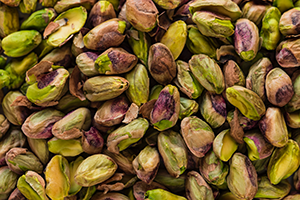Would you like to understand the benefits provided by comprehensive two-dimensional LC techniques, for the separation/identification of complex matrices in food? If so, this presentation from Prof. Luigi Mondello is what you need.
 Food and natural products contain a plethora of bioactive molecules with beneficial effects on human health, including phenols, flavonoids, alkaloids and lipids. A number of studies have already focused on the chemistry and pharmacological activity of these products, but there is still much left in the discovery and characterization of novel compounds from different sources.
Food and natural products contain a plethora of bioactive molecules with beneficial effects on human health, including phenols, flavonoids, alkaloids and lipids. A number of studies have already focused on the chemistry and pharmacological activity of these products, but there is still much left in the discovery and characterization of novel compounds from different sources.
High efficient analytical methods are needed to achieve a reliable profiling of the bioactive constituents in foodstuffs, while at the same time being selective and sensitive enough to detect minor components, such as impurities and potential harmful molecules. In most cases, the huge complexity of foodstuffs overwhelm the separation/identification power of conventional one-dimensional liquid chromatography (1D-LC); a potential powerful alternative is comprehensive two-dimensional LC (LC×LC), involving the coupling of two or more orthogonal or quasi-orthogonal separation mechanisms.
Several LC×LC approaches using different column combinations (e.g., NP×RP, RP×RP and HILIC×RP) and instrumental set-up have been developed for this task, using dedicated software for data processing. Apart from the clear benefits in terms of separation/ identification power, high reproducibility and stable retention times were achieved.
Separation Science in collaboration with Merck KGaA (Darmstadt, Germany) offers an on-demand presentation covering selected LC×LC applications for the characterization of bioactive components in foodstuffs are illustrated. The presentation is given by Prof. Luigi Mondello, Full Professor of Analytical Chemistry at the Chemical, Biological, Pharmaceutical and Environmental Sciences Department of the University of Messina, Italy. Luigi is the author of about 521 publications and 1255 conference presentations, co-editor of the books “Multidimensional Chromatography” and “Citrus oil: Composition, Advanced Analytical Techniques, Contaminants, and Biological Acitivity”, and editor of the book “Comprehensive Chromatography in Combination with Mass Spectrometry”. His research interests include high-resolution chromatography techniques (HRGC, HPLC, HRGC-MS, HPLC-MS, OPLC) and the development of hyphenated (LC-GCMS, GC-GC) and multidimensional “comprehensive” (GC×GC, LC×LC) techniques and their applications to the study of natural complex matrices.
